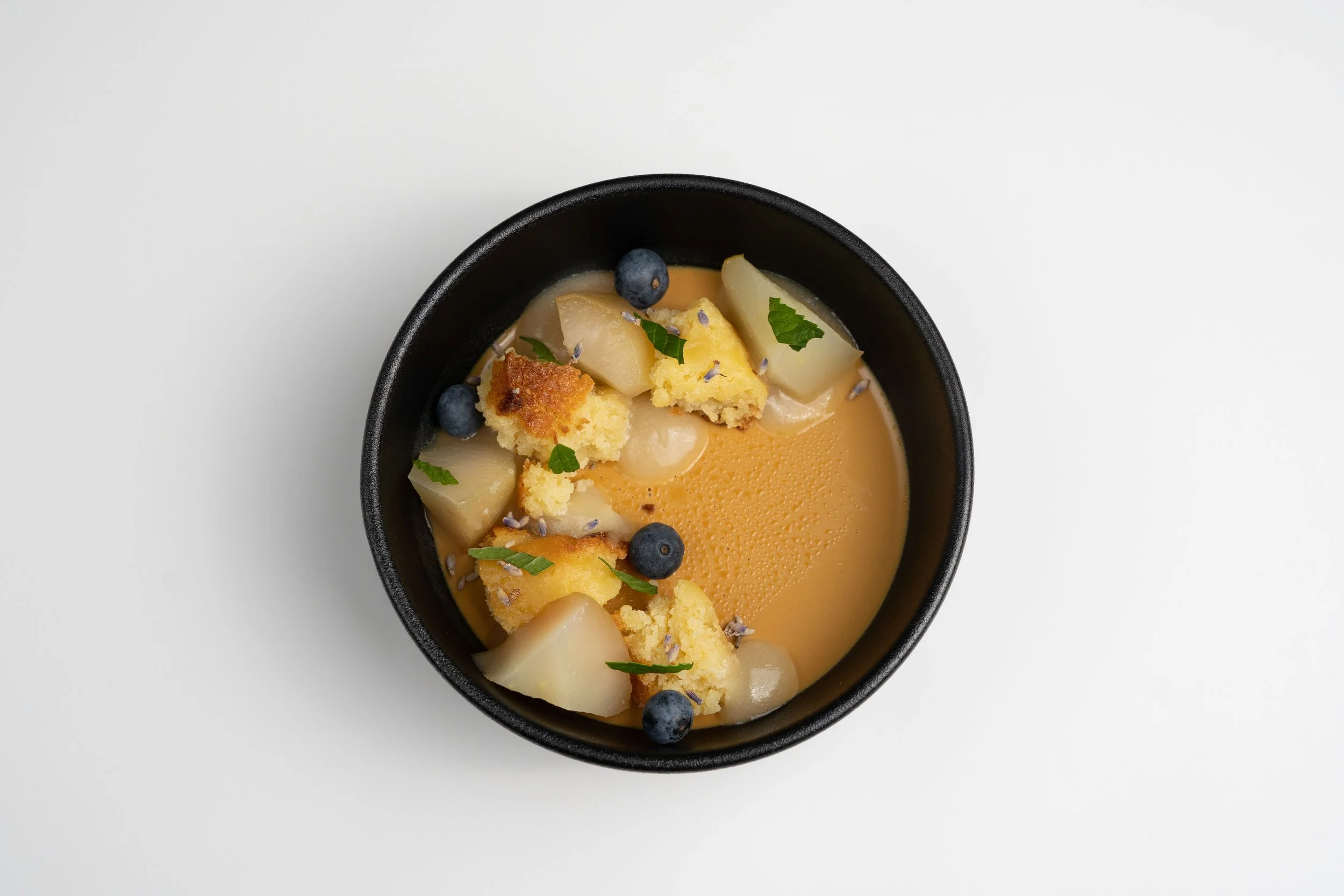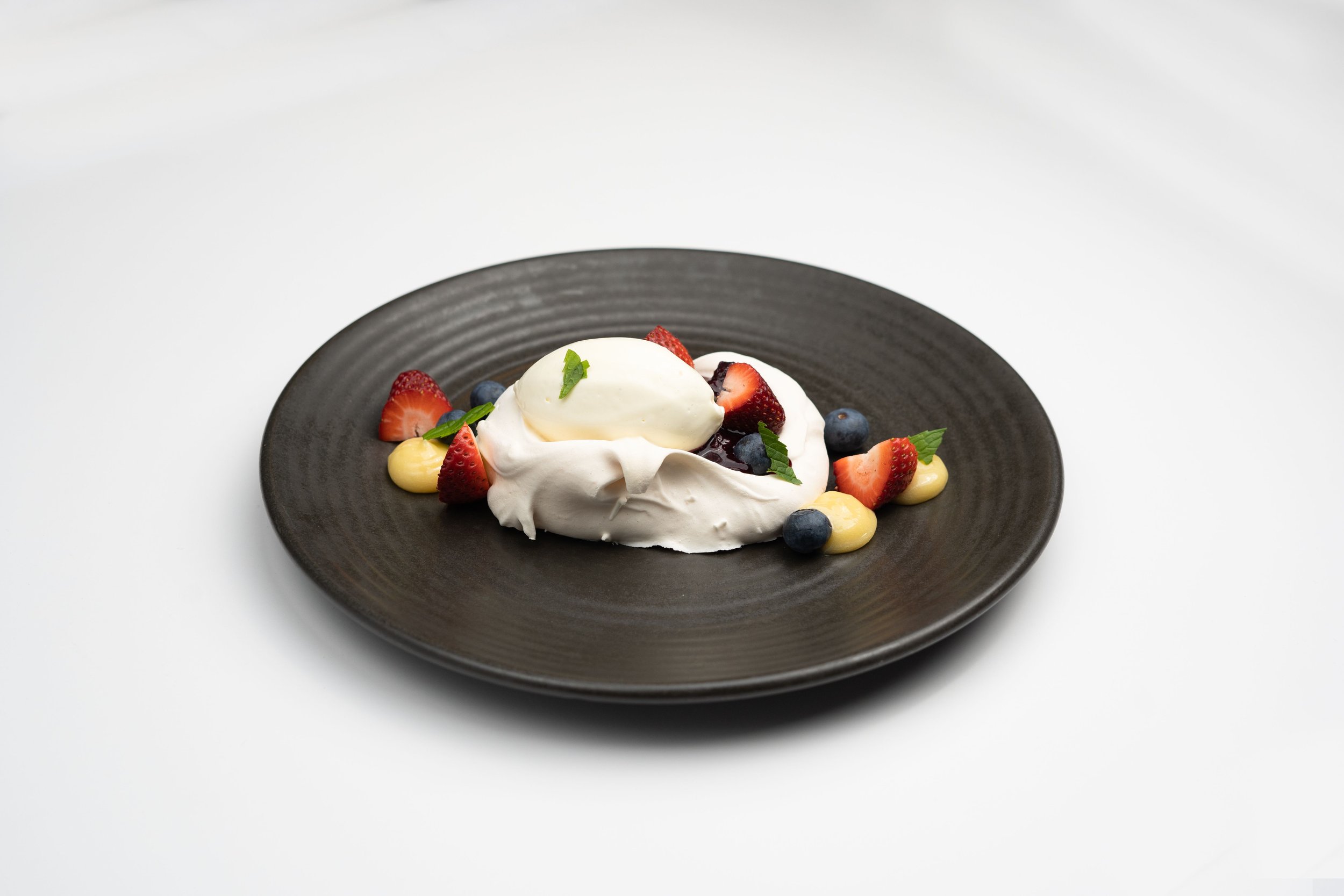Designing desserts to drive profit
For many customers, dessert is the most important course of a meal. It’s the final impression that they take away of their dining experience and such has a big impact on whether or not they’ll choose to come back. Desserts can also be a highly profitable menu item, especially given the availability of readymade products from major suppliers which you can use as a base on which to build your own signature dish. Our Foodservice Rep consultant chefs share their insights on how you can utilise desserts to drive profit on the menu.
“When it comes to desserts, buying in readymade components – making what you can and buying what you can’t – is the way to boost your profitability,” says chef Peter Wright, whose Borthwick Foods food distribution business regularly sources such readymade elements. “If you want to buy a finished bespoke artisan dessert you can, but it’s very expensive. So what companies like Borthwick Foods are doing, they’re helping you break down the elements – we provide you with a product like a beautiful chocolate mould to which you can then add your signature filling, sauce and garnish.”
“The number one focus in desserts today is that they have to be Instagrammable”
Peter says a good principle to follow in designing desserts is to focus on ingredients which not only complement but contrast each other in texture as well as flavour. “A dessert needs something crisp, something soft, so a bit of crunch and a bit of gooiness – whether that’s some pulled sugar, a chocolate shard and so on as the garnish, you should put your own spin on it, because the last thing you want is everyone having the same dessert menu.
“When it comes to profitability, every chef learns in the course of their apprenticeship that seasonal produce is always more profitable – so work your menus around that. Fruit is best when it’s in season so you should always look to incorporate fresh seasonal fruit into your desserts – it doesn’t all have to be about chocolate! Buy berries in summer when they're cheap, puree them and freeze them and use them in the winter. It’s not rocket science, it’s just taking advantage of seasonality.”
“Also, now more than ever you have to design for visual appeal – that’s the number one focus in desserts today is that they have to be Instagrammable. Think about yourself as a consumer – if you’re at a nice restaurant, a dessert is the last thing you’re likely to order so it needs to have a certain amount of wow factor. You want the customer to wake up the next day and remember it, because it was the last thing they ate last night and the first thing they recall. So when I'm designing a dessert plate I always think of that.
Peter recommends for restaurateurs thinking about dessert presentation, think elegance. “People like to make an event of dining out when they’re going to a nice restaurant – it might be a special occasion where everyone’s dressed up. So in that instance the dessert needs to exemplify that – it should be elegant, the flavours should be delicate and there should be some kind of surprise element within it, whether an added crunch or a filling that oozes out. A good dessert has layers and that sort of goes hand in glove with the elegance of the dining experience.
“When you have a set amount of covers, offering smaller sharing portions makes good business sense”
“In a café it’s different, of course, but again presentation plays a key role. You don’t want a dessert running down your chin as you eat it – it needs to be eatable with a fork, have a nice garnish on top. Consumers are becoming more expert in what they're ordering as they eat out more often, and the impact of an elegant, extravagantly flavoured dessert will be posted online, shared and spoken about more than any other dish on the menu. And it's often a dish that's shared between two or more people, so it has to be able to lend itself to that as well.
“Some restaurants are now including a dessert sharing plate as part of a set menu, so you might get three or four small portions to share because people often say they don’t want desserts. So when you have a set amount of covers, as we’ve seen during the recent restrictions, offering smaller sharing portions makes good business sense.
“You should also include cheese as a dessert option, and Australia has the best selection in the world outside of France. There's so many boutique cheesemakers and cheese can be served extravagantly as well, with beautiful Lavosh bark, flavoured grissini, a variety of dried fruit – it certainly doesn’t have to be just cheese and crackers.”
Balance pre-made desserts with in-house offerings
Gary Johnson, National Executive Chef of ALH Hotel Group, says the approach in its pubs is to have a balance of about three of four desserts on each menu, with at least one if not two made completely in-house. “They’re generally the ones we find our customers love, because they’re the comfort foods: the sticky date puddings, apple pies, banana fritters. As simple as they sound, they fly out the door with a drizzle of rum, some syrup and scoop of vanilla ice cream. These are the desserts most of us enjoyed growing up, that we're able to remember and possibly even evolve into a contemporary presentation while retaining those same flavours. So you close your eyes and you can bring that memory back.
“The other thing we try to do is keep our presentation quite simple, because most of the venues get the front of house team to produce those items. Customers will shop with their eyes so the focus has to be on visual appeal – lemon meringue pies, chocolate brownies, all that sort of thing. We generally try to put a little twist on them with a really good quality ice cream, some housemade fudge sauce – these are simple garnishes that just give the base product the upper edge, and obviously a bit more ownership for our chefs to be able to say we've paired the pre-made brownie with this wonderful shaved coconut and chocolate ice cream and here’s a beautiful fudge sauce to go with it.
“I believe every hotel needs to be famous for a particular dessert, whether it’s something housemade or assembled with externally sourced components. The team need to be confident and suggest them to customers when they’re clearing tables: have you tried chef's sticky date pudding with grandma’s vanilla bean sauce? And in fact I use my grandmother’s own sticky date pudding recipe as well in quite a few of our venues including all the grill houses – the secret ingredient is to soak the dates in a little Earl Grey tea!”
“I believe every hotel needs to be famous for a particular dessert, whether it’s something housemade or assembled with externally sourced components”
Gary adds that in the pub market you have to look at desserts through a different lens – “if a customer is coming to the pub for a dessert, they're usually also having a coffee and these are incremental sales in that they probably didn’t think they were going to have it until they got there, but they saw the display window and decided to order it. We always have our cakes and individual desserts on display – they’re colourful, they’re fresh and they look fantastic. We also present them on distinctive plates – that can really give the presentation a wow factor for a lot of people. Especially for our seniors desserts can be the highlight of their day so we can't disappoint by serving them in a plain bowl or plate – it has to be something a bit creative in that space too.”
Simplicity is key
Chef Adam Moore says simplicity is key when it comes to desserts and makes the point that especially in the café market, we’re now seeing fewer options on the dessert menu – but ones which deliver more impact with customers.
“You don’t have the most extensive list of desserts in a lot of establishments at the moment because of the staff turnover,” Adam says. “So rather than focusing their core staff on making desserts from scratch, the smart operators are using readymade products, like a Unilever or Nestle Mousse as a base and then enhancing it with their own flavours to create something like a Matcha Crème Brulee – which is a simple way of making a consistently great tasting product without having to bring in lots of ingredients which may not otherwise be used.
“Another way to drive profitability is to repurpose one ingredient into many”
“Another great example which is making a comeback on menus right now is Eton mess, which is cost-effective and really easy to assemble – you can throw it together and substitute ingredients as needed. One place I went to recently had a deep fried banana on the menu – but what do you do if your bananas are starting to go soft? Your dessert won’t be the same. So being able to use readymade ingredients is the smart solution – it’s much more cost effective.
Adam says another way to drive profitability is to repurpose one ingredient into many: “Your chocolate brownies can also be used in ice cream or trifle or become the base in a bavois. Finding multiple applications for ingredients like this can open the door to lots of possibilities.
“You can also hook up with another foodservice business which has complementary ingredients – like buying in lamingtons from a great bakery like Tokyo Lamington in Enmore and featuring them on the menu. You can keep them frozen and they don’t take long to defrost, and there’s a great selection that suits any menu.”
Desserts popularity growing on club menu
Jason Stuart, recently appointed as Head Chef at The Ary Toukley, has recently completed a revamp of the club’s menu, including its desserts, and has been pleasantly surprised by their popularity.
“I was told when planning the new menu that desserts tend not to be big sellers and in fact we only had two desserts on offer. But we launched the new menu with three and the sales seem to be quite strong, with all three selling evenly at the moment.
“Given we’re an RSL club I was a little conservative with the choices – we went with mini individual pavlovas served with lemon curd, fresh berries and berry compote. The second one is a gluten free dessert which is a honey panna cotta with poached pears and gluten free almond cake.
“And because everyone loves chocolate we decided our third option would be a rich chocolate tarte with orange segments, orange puree and whipped cream”
“We’ll probably expand further in future and right now I’m trialling some new desserts within our Christmas function menus. We had a dinner for the club directors last night and again keeping in mind they are the older demographic I went for a modern day trifle – it looked nothing like your everyday trifle but consisted of flourless almond cake, almond panna cotta, orange jelly segments, caramelised almonds and some chocolate chives. So a completely different kind of trifle, but packed full of flavour and it worked really well!”








